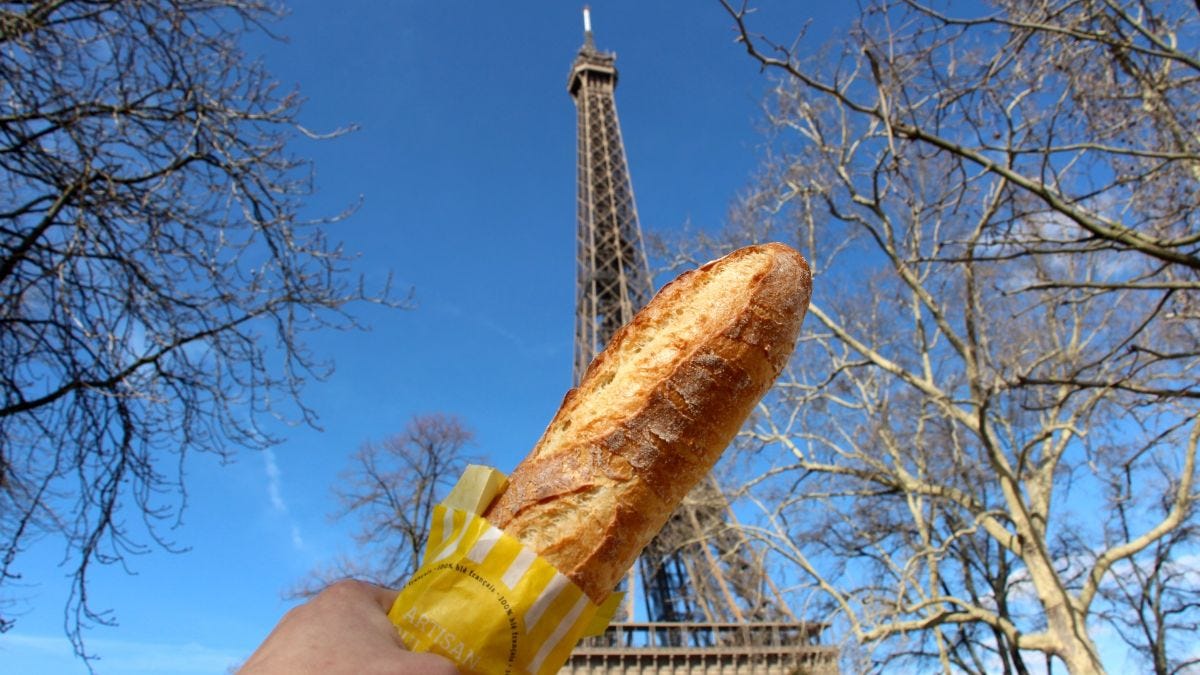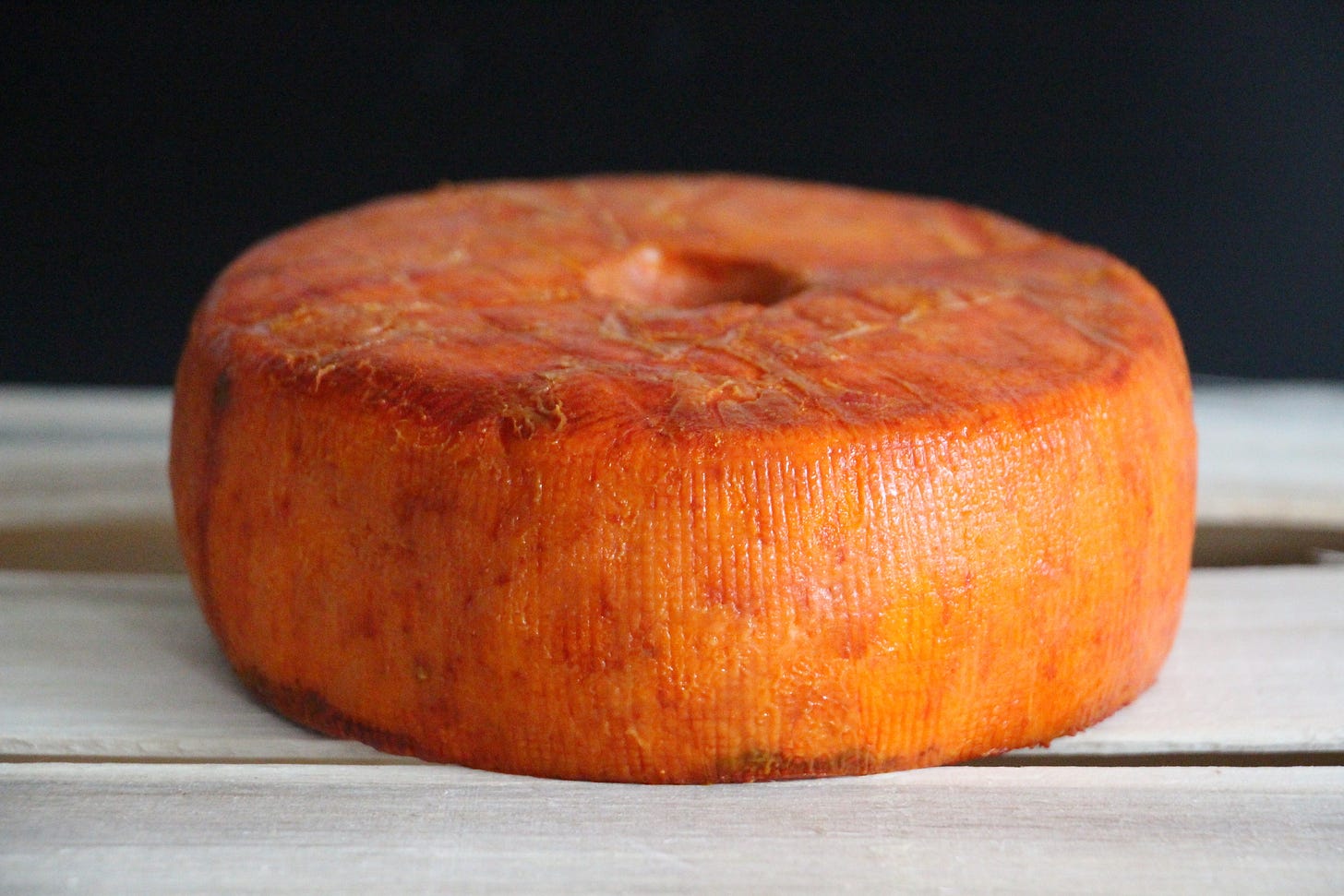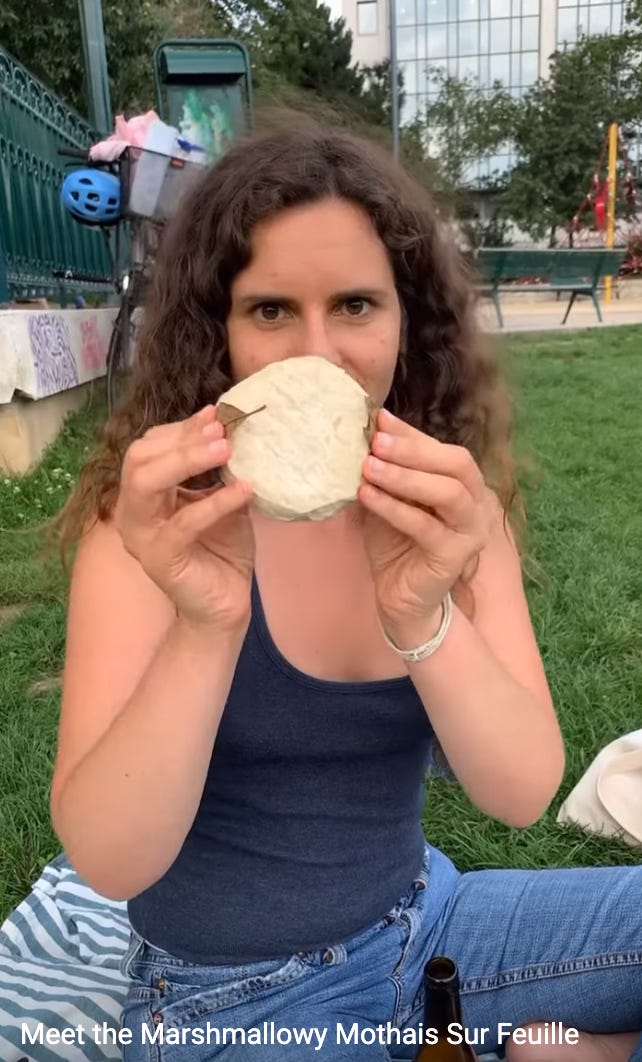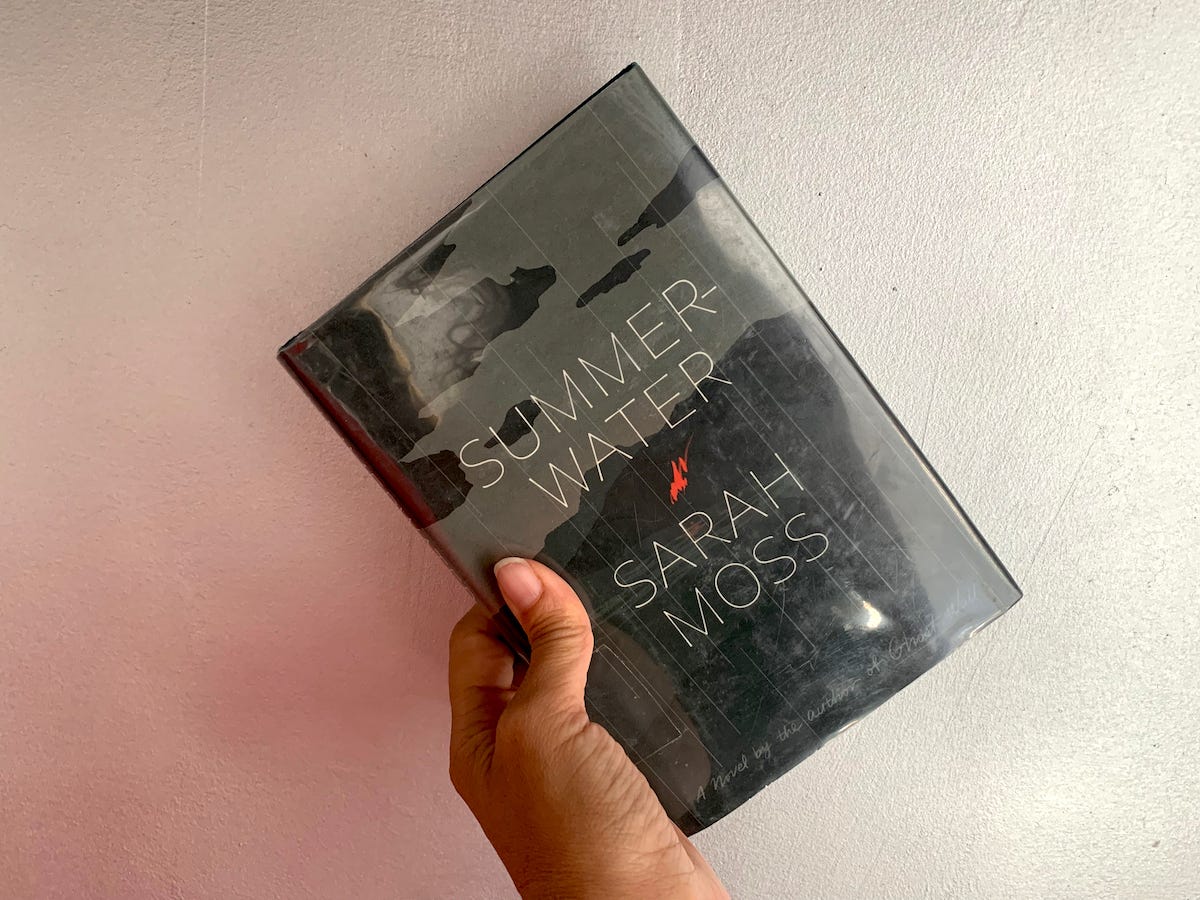Emily in France 🇫🇷 Bonne Rentrée !

Bonne rentrée !
Two weeks ago, I saw an unmistakably Parisian sign of fall's impending arrival: a young woman swaddled against the approximately 75-degree temperatures with a full-on woolen blanket wrapped around her neck in lieu of a scarf. And while as of a few days ago, even I have traded out my sandals for boots, tour season remains in full swing and will for a few weeks longer.
One of my favorite parts of guiding is fielding questions – the weirder and more esoteric the better. And while I've gotten some doozies (one of my favorites, to date, is: "Why is pigeon poop a different color in Paris?"), often, I get versions of the same question:
Are you supposed to eat cheese with bread? (Answer: Yes, unless you're an aristocrat.)
Why are there no bathrooms anywhere? (Answer: I think because the French are chronically dehydrated due to the tiny size of their Duralex glasses and penchant for not drinking while walking, but TBC.)
And of course...
How do you know when to switch from bonjour to bonsoir?
As long-time readers of my work will know, bonjour is essential to the French way of life. Far more than a greeting, it's an acknowledgement of the personhood of your interlocutor and can, as I explored with Julie Barlow on Navigating the French, truly mean anything from "May I trouble you?" to "I acknowledge I'm entering your space" to, yes, occasionally, "Hello."
But bonjour is not the only greeting we have, in France. An internal clock the likes of which I think one must be born with dictates that some time around 5pm, one switches from bonjour to bonsoir.
And things only get wonkier when saying goodbye.
First off, few people actually say au revoir. Instead, they wish you a pleasant rest of your day (bonne journée), rest of your evening (bonne soirée), weekend (bon weekend), or holiday season (bonnes fêtes). And around this time of year, they also wish you bonne rentrée – a catchall season that encompasses not just back-to-school but, for the vacation-loving French, back-to-work and, indeed, back-to-life.
I'll be exploring this term in greater detail on Navigating the French with Anna Polonyi in season 3's début episode. Until then, I wish you all a great rentrée and hope you've set your sights on some amazing adventures. I know I have.
This is the free edition of my newsletter, which comes out every Tuesday. If you're interested in subscribing to the paid edition, which comes out every other Thursday and features exclusive tips on Paris dining and more, sign up here!

Cheese of the Week
If you're a fan of Saint-Nectaire – or, for that matter, if you grew up loving Babybel – Murols will probably be right up your alley. This relatively mild cheese from Auvergne is made with pasteurized milk and has a sticky, roucou-tinged orange rind. Far less assertive than many other cheeses sporting a similar color, it's elastic, tangy, and only slightly funky.

While Murols is fairly autumnal, with is deeply burnished hue, Mothais sur Feuille can still be found in many of my favorite cheese shops. It's also the subject of my very first YouTube cheese short – check it out here!
To discover more of my favorite cheeses, be sure to follow me on Instagram @emily_in_france and tune into the Terroir Podcast, where Caroline Conner and I delve into France's cheese, wine, and more one region at a time.

What I'm Eating
The existence of Yves Camdeborde’s family of Avant-Comptoir restaurants is not news to foodies. Since 2010, this bistronomy innovator has been serving up French-style tapas in jovial, convivial bar settings, with Avant-Comptoirs dedicated to fish, market fare, and, of course, meat: l’Avant-Comptoir de la Terre was the first of the restaurants to open, and it remains a stalwart for those who like beef, offal, and consequential butter mounds. More on the blog.
Discover more of my foodie finds via Instagram @emily_in_france and on the blog.
Where I'm Going
1. To the top of the Opéra Bastille, to discover an ultra-local saffron farm.
2. To Bières Cultes, for craft beer conversations (and hopefully some seasonal porter).
3. To Venice! (Follow me on Instagram to discover the work of local surrealist photographer Minh T., local glass and lace-making, and to check in on my Bellini counter.)
What I'm Writing
1. Before Silicon Valley, the hills of Los Altos were covered in apricot trees. Discover the richness behind California's other gold rush on InsideHook.
2. Selby's Black Label burger costs $50. I explored why – and how to recreate it at home – for InsideHook.
3. From the archives: If you've ever been to Paris and been dumbfounded by the lack of rutabaga and Jerusalem artichoke or even kale, well, there's a reason for that. Chefs are helping hardy roots overcome a World War II stigma, which I explored for Atlas Obscura.
What I'm Saying
Paris Underground Radio is enjoying a much-deserved break before we launch season 3 later this month! In the meantime, those in Paris might like to join us for our one-year anniversary September 22 – RSVP here for a free glass of wine and a chance to win cool prizes.

What I'm Reading
1. This was my book of the summer – a surprise as it found its way into my stack by way of an old trick my sister and I used to use: flouting the laws of the world and choosing a book based on its cover. I only realized after beginning it that I own (and criminally have not yet read) another of Sarah Moss’ books, which has now skyrocketed to the top of my to-read pile. Summerwater, meanwhile, has already been gifted to a friend and purchased by yours truly. This deft, intricate exploration of several different people staying at a highland holiday camp in one 24-hour, very rainy period is quiet and bold at the same time. The sentences are beautiful; the humanity is vivid. Moss is an original, and this book is an absolute delight.
2. Of all of the senses, smell is the hardest to capture in words – something many writers have struggled with (as has this tour guide – Exhibit A is my overuse of the word "barnyardy.") More on why scent is so hard to capture in the New Yorker.
3. For all of its appealing, Old World charm, Paris has actually been rebuilt time and time and time again. One particularly vivid example of how bits of Paris have been lost to time is the project to bring back a river, the Bièvre, that once fed the Left Banks tanneries and more. In National Geographic.
A bientôt !



